|
If you're looking for a great low maintenance plant for your driveway, fence line or even around the swimming pool, then you can't go past the agapanthus. Agapanthus is ideal plant for dry summers.
These South African members of the lily family have adapted well to hot Australian summers when their display of spectacular blue and white flowers is at its peak. They look equally at home with modern architecture as they do with colonial or federation houses.
Agapanthuses are such easy plants to grow and require so little effort that they are often neglected but to make sure your plants flower really well, there are some important tips to consider.
Varieties of Agapanthus
The variety of Agapanthus available for gardeners to choose from have exploded over the last many years. Agapanthus now range from the traditional purple flower to a height of one metre to compact varieties with variegated foliage. Some compact agapanthus varieties are ideal for container planting, borders and smaller gardens. Here are our favourite agapanthus varieties;
Agapanthus 'Baby Pete' - Dwarf evergreen variety with compact mounding habit. Stems grows to the height of 35cm.
Agapanthus 'Golden Drop' - Ultra-compact habit with narrow variegated leaves. 25cmH.
Agapanthus 'Blue Ice' - White flowers with purple highlights at the stem of the flower. Grows to 80cm in height.
Agapanthus 'Amethyst' - Purple flowers. Reblooms several times a year. Very hardy and reliable. Make great cut flowers.
Agapanthus 'Black Panther' - Produces close to black blooms contrasting against green foliage.
Agapanthuses are not fussy about what soil they grow in, they can withstand coastal situations and even the occasional flood and frost. They also make excellent specimens for containers on hot, sunny balconies, verandahs and patios.
Why is my agapanthus not flowering?
The two main causes of poor flowering are lack of sunlight and overcrowding. Agapanthus love full sun and unless they are grown in a bright, sunny position they won't flower well, although their lush, strap-like foliage will still look pleasing.
One of the great things about growing agapanthus is that once you've got one, you're guaranteed to have more because they multiply by themselves in clumps. The downside is, if they're left untouched, they will become overcrowded and flower poorly.
To avoid this problem, cut off the seed heads when the plant has finished flowering, dig up the clumps and divide them into individual plants. Large clumps of agapanthus develop a network of tight roots and may require a mattock and crowbar to dig them out.
Divide up the parent clump into small groups comprising of two or three plantlets, using a sharp spade or secateurs and taking care not to tear the roots. Tidy up each of these individual groups by removing spent foliage and damaged roots before replanting into a sunny position. Water each plant well and mulch generously to conserve moisture and suppress weed growth.
Next summer you'll not only have more plants, but each plant will flower better.
To keep your agapanthus healthy, fertilise them regularly with Rose & Flower Plant Food and keep them moist in hot weather.
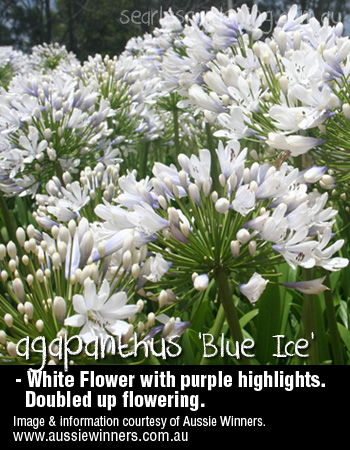 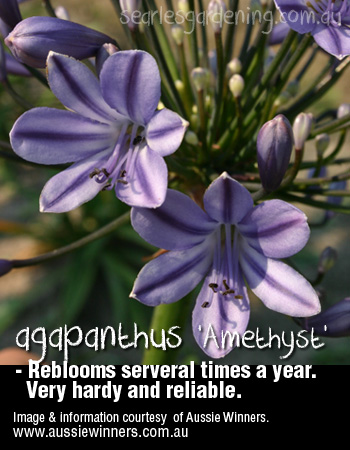
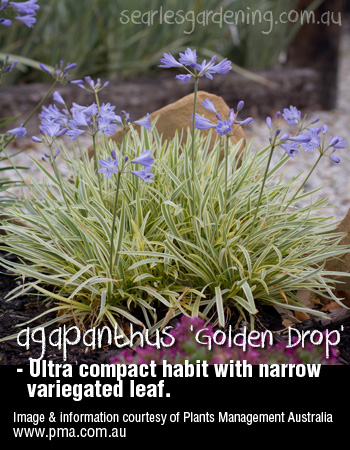 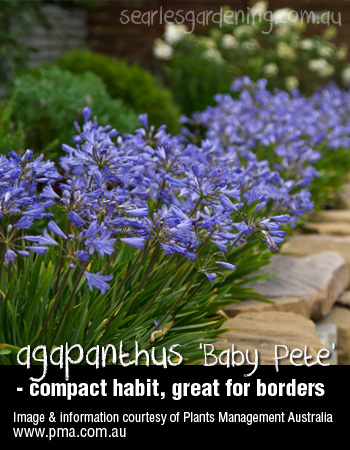
|
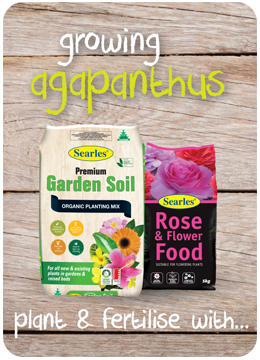
---------------------------------
FOR MORE INFO
CLICK PRODUCT NAME BELOW
Searles Rose & Flower
Plant Food
|










